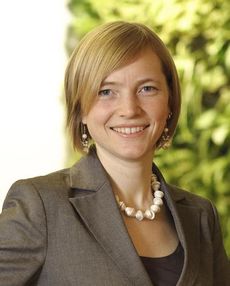


Seven answers From: Eva Helmeth
Statement: What I always wanted to tell the world about collaborative mobility.
Collaborative use of vehicles, as in the case of carsharing, has nothing to do with renouncement. It is a gain in mobility, which is even fun.
Dream scenario: How I wish the mobile world looks like in 2060.
2060 traffic will be fluent, because the majority of people will have realized, that there is no better vehicle than the bycicle. Only few cars will be on the roads. The cars are rented and filled with people, which travel together in ridesharing communities. Most people do not rely on cars anymore because their working place is in the neighbourhood area. There is life in the streets: Parking lots have been transformed into public meeting places – coffeeshops, playgrounds and parks.
My TOP-moment: In my eyes the biggest success in the history of collaborative mobility.
As a native German and Globetrotter, I do not know any other country, where carsharing is as widely recognized and popular as it is in Switzerland. The decision of the former cooperative Sharecom and ATG to join forces as the „Mobility Cooperative“, is for me the most important step towards the success of carsharing Being able to drive everywhere and at any time one of Mobility’s 2600 cars in Switzerland is the biggest success of the mobility history.
My personal mobility behaviour: How I move privately.
As long as the ground is not frozen I commute by bicyle. I enjoy the fresh air, the exercise and the fact not to get in traffic jams.
Once a week I use mobility carsharing to commute to my local gym. Driving a different car each time is part of the fun!
Personal experiences with collaborative mobility: An incident which stayed in my mind.
I cannot remember one unique incident. The use of collaborative mobility has become second nature: During my studies I often used ride sharing services. When moving households I made use of carsharing transporters. For distances that are too long to cover by bicycle, I use carsharing and when I am exploring new cities on one of my trips I like to rely on local bikesharing services. In my opinion it is this matter of course use of collaborative mobility that is of the essence to this new form mobility.
The incident that sparked my interest in shared mobility solutions:
I was lucky to live in Paris in 2007 – exactly in the moment, when the bikesharing system Velib was launched. The effect was huge: suddenly „mobility“ was on the tip of everyone's tongue and the number of cyclists doubled. I was so excited of this idea, that I dealt with this topic even scientifically in my master thesis.
Ready for action: If I could, I would next…
… to anchor carsharing vehicle as „public cars“ in peoples minds. Thereby carsharing becomes a natural part of urban mobility – similar to buses and trains.
DATABOX:

Name: Helmeth
Firstname: Eva
Function: Head of Sales & Consulting
Company: Mobility International AG
Founded in the year: 2001
Number of Collaborators: 12
The Business Idea in Summary:
Mobility International is a 100% owned subsidiary of the mobility cooperative. Mobility International is a 100% subcompany of the mobility cooperative. It developes and sells software solutions for carsharing companys. MobiSys 2.0 was launched at the end of the year 2011 and is the most modern carsharing software on the market to date.
Website:


